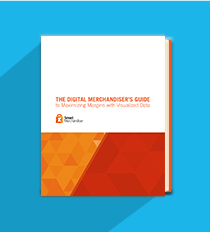
While the act of physically going into a store, browsing the unique items, and trying on the latest fabulous outfit is an enjoyable (and often therapeutic) experience for many customers, shopping online also has advantages.
Online shopping delivers a more versatile experience for shoppers than brick and mortar stores, and it presents retailers with an unprecedented opportunity to grow. Here are a few of the reasons that online stores enable retailers to grow quickly:
Build “stickiness” and personalization
eCommerce retailers know that a website requires a personalized experience that caters to the interests and needs of their customers. Even smaller players can utilize analytics tools to capture the preferences and interests of individual shoppers and promote a shopping experience and product selection that is led by personalized promotions tailored to each individual. The successful online merchandiser makes a website 'sticky' for prospective buyers by providing outstanding ecommerce crowd-sourced content, and they use meta tags and keywords to increase search result rankings.
Create a seamless browsing experience
Internal website product tagging should be focused on industry-appropriate keywords to enable intuitive navigation. It should ensure your promotional strategies, product availability, and brand experience is consistent through all channels, regardless if it’s in store, online, or on a mobile device. Successful merchandisers understand these are the key ingredients for drawing in an audience and retaining them. They provide an enticing browsing experience that is far-reaching across all online platforms.
With an organized and systematic tagging system, your online store can hold much more inventory than a brick and mortar store while avoiding the cluttered effect that deters customers from making a decision. Just like 20-page restaurant menus are staggering, if retail stores house too many options, customers feel overwhelmed.
Online however, retailers can double their selling probability while bypassing the problems of having an inventory that's too large as long as they conform to consistent tagging and product sorting systems.
Engage the world of mobile commerce
Mobile commerce hit full speed ahead in 2014, starting with the Apple Pay launch in October. In fact, it was the company's primary innovation surrounding the iPhone 6 that combined easy point of sale (POS) transacting with NFC technology. As of 2015, U.S. shoppers joined the growing list of countries embracing mobile commerce rather than shopping via personal computers.
The macro trend for the rest of the year is as clear as the complexity and variety of these devices continue to grow. Goldman Sachs estimates that mobile commerce will increase to more than $626 billion by 2018.
Taking advantage of mobile merchandising opportunities requires that retailers address the following areas of mobile-friendly shopping:
- State-of-the-art mobile responsive websites
- Optimized site purchases through mobile devices
- Payment processed safely and easily at retail POS through devices
- Ability for app-only purchases through devices (for example, Square and Uber)
- In-app purchases through social media sites like Twitter and Facebook
- Specific mobile rewards and coupons to drive in-store traffic and online transactions
Access to advanced, 21st century software
Successful online retailers utilize merchandising-specific software to personalize the shopping experience for their customers. Online stores can cater to the unique needs of their customers more than physical stores do or can. Here are a few of the tools that enable online retailers to engage with their customers extensively.
Visual Catalog Management
This software helps the digital merchandiser manage their online catalog by enabling them to copy, add, remove, and drag and drop items inside a graphical interface that is user-friendly.
Inventory Management
With this tool, online retailers can manage inventory levels and easily determine low-performing items. They can set alerts for out-of-stock or low-inventory products and adjust online storefronts as needed. Unlike a brick and mortar store, an online retailer can immediately gain information on their product performance. This pace of information makes it easy to grow faster and maintain a larger inventory.
Social Media Awareness
This tool enables you measure social media sentiment of particular product across social media channels like Twitter and Facebook. It provides insight on product mentions, as well as how many likes, reviews, and ratings it has.
This added insight enables online retailers to quickly adjust their storefront to take advantage of spikes in popularity. When trends move fast, online stores managed with dynamic tools can respond just as quickly.
It is only a matter of time before all retail exists in the digital sphere. The digital medium speeds up the sales and reporting process and makes it easier for retailers to understand their customers. If you are looking to grow and don't have an online store, the time to develop a site is now!
Your job is difficult, but it doesn't have to be tedious. Work smarter, not harder and invest in state-of-the-art merchandising software.
Download the eBook to learn more!


